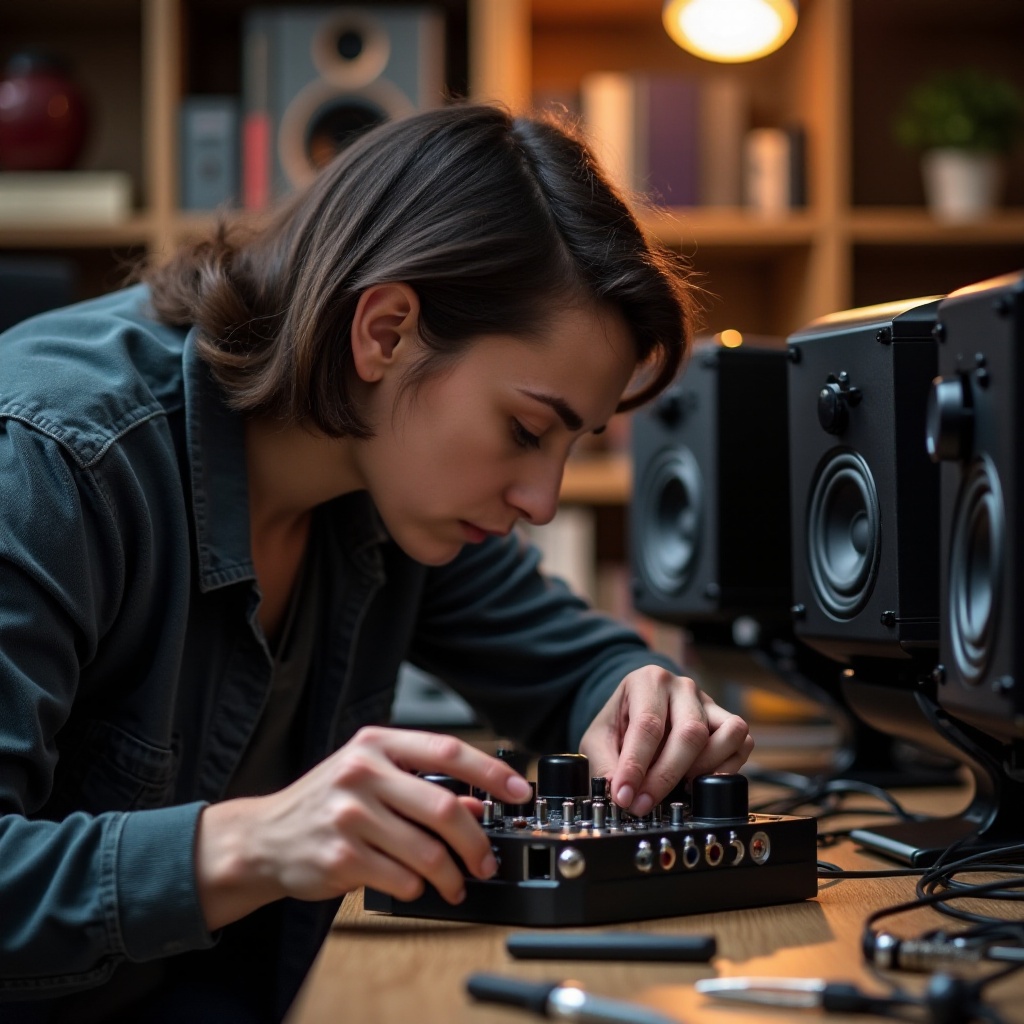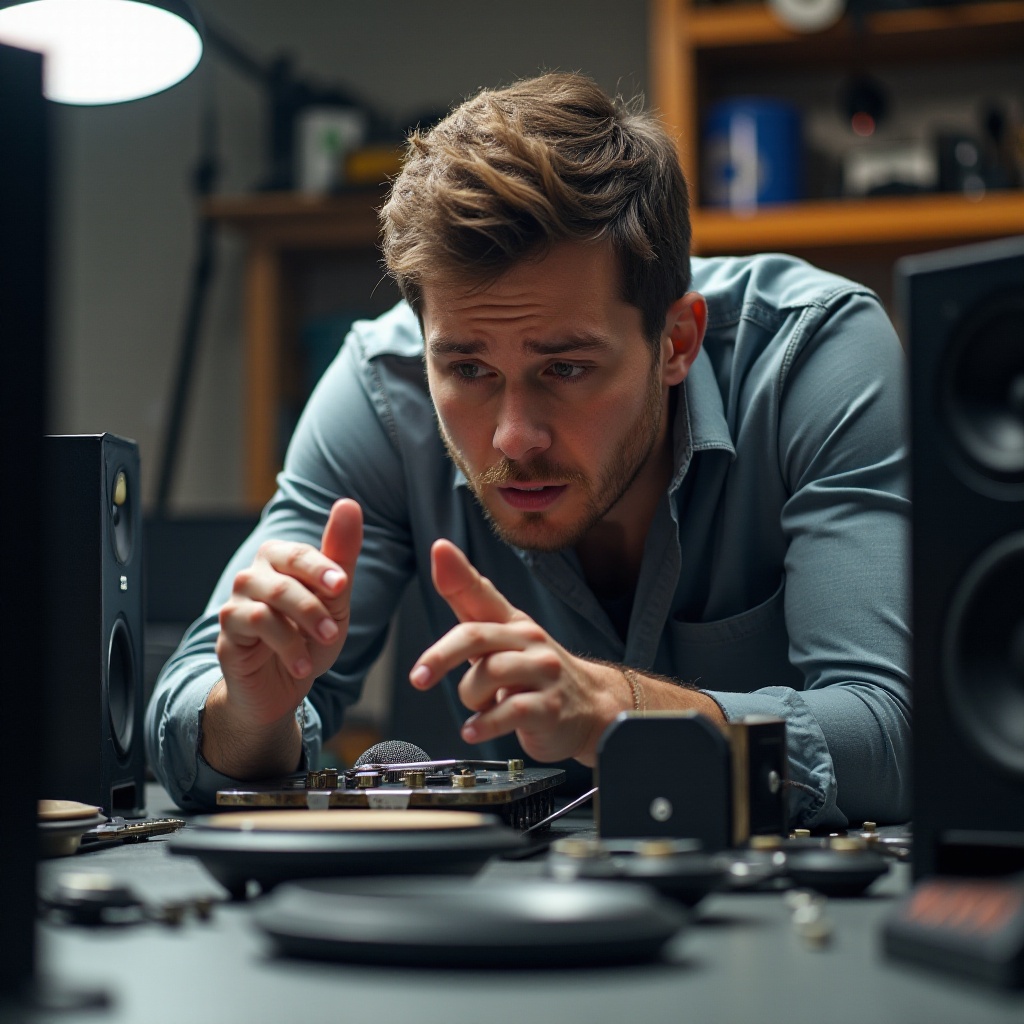Fixing Muffled Sound from Speakers: A Comprehensive Guide
Introduction
Have you ever played your favorite song or settled in for an important video call, only to be met with muffled sound from your speakers? It’s a common problem that disrupts the clarity and quality of your audio experience. Understanding what causes this issue and how to fix it can significantly enhance your listening pleasure. This comprehensive guide covers everything from diagnosing the problem to executing DIY fixes and knowing when to seek professional help.

Common Causes of Muffled Sound
Several factors can contribute to muffled sound from speakers. Identifying these causes is the first step towards a solution:
-
Dust and Debris: Dust accumulation on the speaker components can obstruct sound waves, leading to muffled audio. Regular cleaning can prevent this common issue.
-
Damaged Speaker Components: Physical damage to the speaker cones or other internal components can distort sound. Inspecting for visible signs of wear and tear can point out the problem areas.
-
Audio Settings: Sometimes, it's not the hardware but the software settings. Incorrect equalizer settings can affect sound quality, making it appear muffled.
-
Poor Connections: Loose or corroded cables and connections can disrupt the audio signal. Ensuring that all connections are secure can help alleviate this issue.
-
Faulty Amplifiers or Receivers: Issues with the amplifier or receiver, if you use one, can also result in poor sound quality. Checking these devices for any malfunctions can be crucial.
Understanding these common causes can help you target the exact reason for the muffled sound in your speakers.
Diagnosing the Problem
Before you can fix muffled sound, it’s essential to diagnose the exact problem correctly. Follow these steps to identify the root cause:
-
Check Audio Settings: Start by going through your audio settings on the connected device. Ensure the equalizer settings are neutral or set to your preference for clarity.
-
Inspect the Speakers: Visually examine the speakers for dust, debris, and physical damage. Use a flashlight to look inside any grills or covers.
-
Test with Different Devices and Media: Connect your speakers to a different device or play different media formats to see if the issue persists. This can help determine if the problem is with the speaker hardware or the audio source.
-
Examine the Connections: Ensure that all cables and connectors are securely plugged in. Look for signs of wear or corrosion on the connectors.
-
Check the Amplifier/Receiver: If using an external amplifier or receiver, verify that they are functioning correctly. Try connecting a different set of speakers to see if the problem continues.
This diagnostic checklist helps narrow down the potential causes, making the fix more manageable.

DIY Fixes for Muffled Sound
Once you've diagnosed the problem, you can try several DIY solutions to fix the muffled sound:
- Cleaning the Speakers:
- Turn off and unplug the speakers.
- Use a soft brush or cloth to remove dust from the speaker grills.
-
For stubborn dust, use compressed air carefully.
-
Adjusting Audio Settings:
- Access the audio settings menu on your connected device.
- Reset the equalizer settings to default or adjust them to enhance clarity.
-
Test different preset modes like 'Rock,' 'Jazz,' or 'Vocal' to find the best fit.
-
Securing Connections:
- Unplug and replug all cables to ensure a secure connection.
-
Use contact cleaner on metal parts to remove oxidation and improve connectivity.
-
Replacing Damaged Components:
- Identify any physically damaged parts such as cones or wires.
- Purchase replacement parts from the manufacturer or use compatible third-party components.
-
Follow instructional guides or videos to replace the damaged parts correctly.
-
Amplifier/Receiver Troubleshooting:
- Check the settings on your amplifier or receiver.
- Ensure the volume, bass, and treble controls are appropriately set.
- Look into firmware updates or reset the device to factory settings if all else fails.
Implementing these solutions can often restore the clear, high-quality sound from your speakers.
When to Seek Professional Help
Sometimes, despite your best efforts, a DIY approach isn’t enough to resolve the issue. Knowing when to seek professional help can save you time and further damage:
-
Persistent Issues: If muffled sound persists despite trying all the DIY fixes.
-
Visible Damage: Significant physical damage to the speaker components that seem unrepairable at home.
-
Complex Repairs: Problems with internal components or circuitry that require specialized tools and expertise.
-
Warranty Coverage: If your speakers are still under warranty, professional repairs might be free or at a reduced cost.
Professional technicians have the tools and knowledge to address more complex or severe issues effectively.

Preventing Future Issues
Preventive measures can save you the trouble of dealing with muffled sound in the future. Here are some tips to keep your speakers in optimal condition:
-
Regular Cleaning: Clean your speakers regularly with a soft cloth to prevent dust buildup.
-
Proper Placement: Place your speakers in a dust-free environment, away from direct sunlight and moisture.
-
Use with Care: Handle speakers gently to avoid physical damage.
-
Check Connections: Periodically check all cables and connections for wear and secure fit.
-
Adjust Settings Wisely: Regularly review your audio settings to ensure they remain optimal for sound clarity.
-
Protective Covers: Use speaker covers when not in use to protect them from dust and accidental damage.
Adopting these preventive measures can prolong the life of your speakers and maintain their sound quality.
Conclusion
Muffled sound from speakers can be frustrating, but it's often fixable with a little troubleshooting and care. By understanding the common causes, diagnosing the problem accurately, and applying effective DIY fixes, you can restore the clarity and quality of your audio. If all else fails, don't hesitate to seek professional help. With the right preventive measures, you can keep your speakers sounding great for years to come.
Frequently Asked Questions
Why does my speaker sound muffled?
Speakers may sound muffled due to dust buildup, damaged components, incorrect audio settings, poor connections, or issues with the amplifier or receiver. Identifying and addressing these causes can restore sound clarity.
Can equalizer settings affect speaker sound quality?
Yes, equalizer settings play a crucial role in sound quality. Incorrect settings can make speakers sound muffled. Adjusting the equalizer to enhance treble and reduce bass can improve clarity.
How often should I clean my speakers to prevent muffled sound?
Regular cleaning is essential to maintain sound quality. It's advisable to clean your speakers at least once a month. More frequent cleaning might be necessary if the speakers are in a dusty environment.



